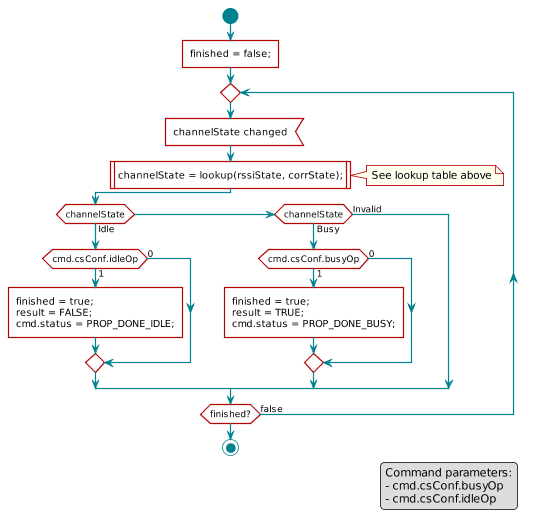Other Parts Discussed in Thread: CC1310
Hi,
Recently we are using CC1310 to develop our own protocol. When implementing slotted CSMA/CA case, sometimes carrier sense says channel is idle but actually some device is transmitting. Could someone please correct me if my comprehension described below is wrong?
Here is my expectation:
Creating a CCA + TX + RX command chain. The absolute starting time of CCA operation is given and TX operation is set to immediate start after CCA detects channel is idle.
DEV1: |<== CCA (94*4) tick ==>|<=========TX (30Bytes) ==========>|
DEV2: |<= Backoff (400 ticks) =>|<== CCA (94*4) tick ==>| (We should see channel busy here)
Thanks,
Matt


